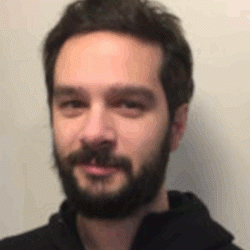Rapid climate change and ocean dynamics: past, present and future.
Research Area
I am a paleoceanographer, geochronologist, and climate scientist focused on the timing and mechanisms of abrupt climate change, primarily using Earth observations, geological records, climate models, and computational methods.
My research is at the interface of geoscience, data science, and climate systems research. Data produced by my team and collaborators include geochemical and sedimentological parameters measured in marine records and ice cores, such as stable water isotopes, chemical components, and cosmogenic radionuclides. This data helps to reconstruct climate and cryosphere-ocean interactions at high latitudes and to determine the timing and rate of climate change in polar regions. We analyze marine sediment records from the North Atlantic, Arctic, and Antarctic Oceans, spanning timescales from the last few hundred years to several glacial-interglacial cycles.
Current strands of research include (but are not limited to):
- Studying the spatial and temporal structure of deep-ocean circulation using observations, climate proxies, and computational techniques.
- Reconstructing the carbon cycle of the last 50,000 years with paleoclimate data assimilation.
- Developing machine learning tools for paleoclimate chronologies.
Project Interests
I seek individuals with strong computing skills interested in addressing climate issues. Possible projects include:
- Unlocking ocean currents: Developing proxy system models to link sediment properties with deep ocean circulation and benchmark climate model projections.
- Extending the AMOC record: Using computational methods to study AMOC's vertical structure and variability.
- Truthful oceans: Applying machine learning to enhance the accuracy of global ocean reanalysis products.
- AI-driven pipeline for climate records: Developing agents to autonomously extract and synthesize climate data from published sources.
- Advancing ice core chronologies: Developing automated methods to align ice cores and reveal past impacts of volcanism and solar changes.

